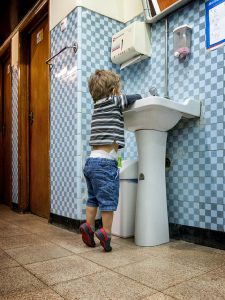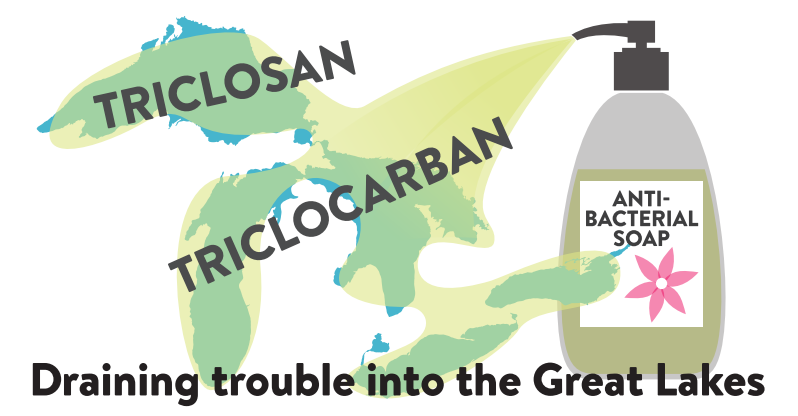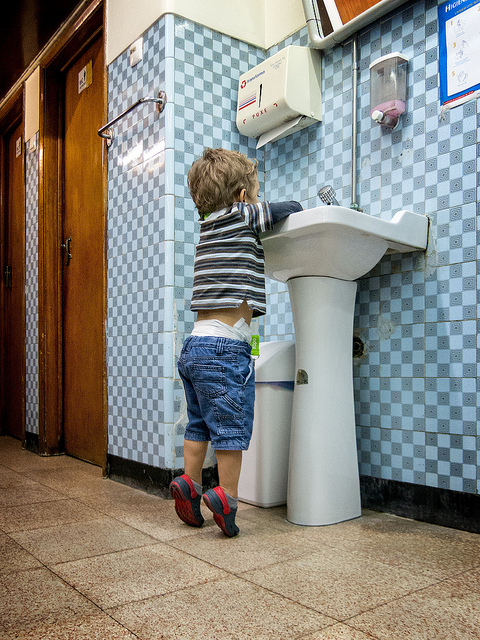
Most people are unaware of how widespread triclosan and triclocarban chemicals are in their daily lives. Many products labelled as ‘antibacterial’, ‘fights odours’ or ‘kills germs’ may contain triclosan or tricocarban. In fact by 2001, 76% of commercial liquid hand soaps in the U.S. contained triclosan and a wide variety of cosmetics, drugs, clothes, school products and kitchenware also now contain this antibacterial chemical. Plastic products such as toys, toothbrushes, shower curtains and cutting boards may contain triclosan as well as mattresses, carpets, tents, and even garbage cans. Triclocarban may be less widely used than triclosan but it is found in 84% of all antimicrobial bar soaps sold in the US.
Today, triclosan and tricocarban rank in the list of top global contaminants and both compounds are now detectable in house dust worldwide, in ocean water, and locations as remote as the water loop of spacecraft! Triclosan is found in 97% of breast milk samples and U.S. streams have a 60 – 100% likelihood of containing detectable quantities of both these chemicals. Is this a problem? It turns out this is a BIG problem from a human health impact, an environmental impact and is a classic case of our failure to regulate common chemicals in consumer products.
Our Health
To better understand how these chemicals may be affecting our health, I and my colleagues at the Canadian Environmental Law Association decided to do GreenScreen assessments of both these chemicals. GreenScreen assessments look at the inherent hazards of a chemical against a comprehensive list of 18 human and environmental health categories. It turns out both these chemicals are reproductive toxicants as well as being endocrine disruptors based on animal studies that demonstrate affects to the thyroid and sex hormones. In addition, both chemicals are very highly hazardous to living organisms in the aquatic environment.
This is very bad news for our lakes and streams, considering that 95% of triclosan and the vast majority of triclocarban are flushed down the drain where triclosan then goes on to form other toxic by-products including dioxins. In fact it was the presence of dioxins in Minnesota’s lakes that resulted in the state taking action. On May 16, 2014 Minnesota became the first U.S. state to ban the retail sale of any consumer product containing triclosan that is used for sanitizing or hand and body cleansing. The ban comes into effect January 1, 2017.
What do regulators say?
The story of how both these chemicals became such wide contaminants demonstrates again why chemical policy reform in the U.S. (and Canada) is urgently needed. Triclosan and triclocarban were patented in the 1960s mostly for use in health care settings. But in 1994 when the FDA removed antibacterial soaps from the drug category, the use of triclosan in consumer products dramatically increased. By 2002, triclosan was listed as a top 10 water contaminant while concern grew at the same time that the use of triclosan and triclocarban in consumer soaps and personal care products did not show any benefit, particularly when according to both the US FDA and the Public health Agency of Canada “soaps with added antibacterial ingredients, such as triclosan, are no more effective than the mechanical action of washing with plain soap and water to remove bacteria from hands.”

In addition to this concern, both the American and Canadian Medical Associations have called upon our respective governments to ban the sale of household antibacterial products due to the risk of antimicrobial resistance. It is clear our regulators need to be prioritizing action on chemicals such as these, which are known to be both highly persistent and toxic in the environment, and requiring safer substitutes – assuming the chemical’s function is needed at all.
California has begun to take just this approach in its Safer Consumer Products Regulations where manufacturers need to answer two questions: 1) Is this chemical necessary? and 2) Is there a safer alternative? No product manufacturer should be using these antibacterial chemicals unless a clear and strong case can be made that these biocides are indeed needed in the product in the first place. In fact the FDA has issued such a challenge to manufacturers to provide more substantial data by December 2014 to demonstrate the safety and effectiveness of antibacterial soaps.
Next steps
Meanwhile, while we should lobby our regulators to take action on triclosan and its close relative, triclocarban, companies and retailers need to be taking responsible action. That is why triclosan is listed on the Hazardous One Hundred list of chemicals of concern by the Mind the Store campaign to help retailers understand which chemicals need to be prioritized for elimination from their suppliers’ products.
The phase out of products with triclosan can indeed be done. For example, since 2005 Co-op DK, Denmark’s largest retailer of fast moving consumer goods has banned the use of triclosan from products on its shelves with one exception for Colgate Total toothpaste which must be clearly labelled that it contains triclosan to prevent gingivitis. Seeing the writing on the wall, some brands are at the forefront of eliminating triclosan from their product lines including Procter & Gamble, Johnson & Johnson and Avon. But more needs to be done. In the meantime consumers need to be reading labels and playing ‘chemical detective’ to avoid these chemicals. Beyond Pesticides and the U.S. Department of Health and Human Services’ Product Database lists many products that contain triclosan.
For more information on these chemicals and what needs to be done, download the report Chemicals in Consumer Products are draining Trouble into the Great Lakes Ecosystem: GreenScreen®Assessment Shows Triclosan and Triclocarban Should be Avoided.
Don’t forget to lobby your governments, companies and retailers to take action on these hazardous and unnecessary chemicals.




